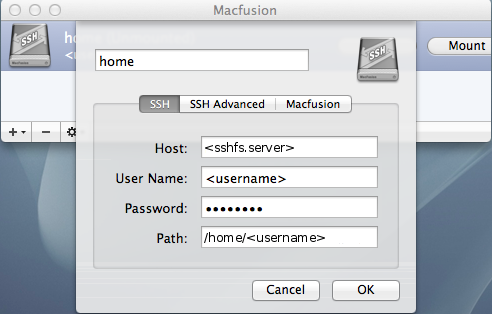Jan 06, 2020 For Fedora, installing sshfs is as easy as: dnf install fuse-sshfs. On Debian-based systems, the package is simply sshfs. Mounting a remote file system. Once sshfs is installed, mounting a remote file system safely over SSH is simple. According to the sshfs manual page (man sshfs), the syntax for the command is.
SSHFS itself is a file system in user space (FUSE) that uses the SSH File Transfer Protocol (SFTP) to mount a remote file system. The sshfs command is a client tool for using SSHFS to mount a remote file system from another server locally on your machine.
More Linux resources
Note:User space (or userland) is all operating system code that runs outside of the Kernel.
While not as performant as a local file system, sshfs is an easy way to work with files on another computer using local programs and tools. Best of all, sshfs can be used by non-privileged users on the local machine (in fact, it is recommended to not be root or to elevate one’s privileges while using sshfs), and it requires no special software on the remote machine other than SSH with SFTP enabled—a common setup.
Installing sshfs
Fuse For Macos Sshfs 7
The sshfs tool is available from most distributions’ standard repositories and is most easily installed using that distribution’s package manager. For Fedora, installing sshfs is as easy as: dnf install fuse-sshfs. On Debian-based systems, the package is simply sshfs.


Mounting a remote file system
Fuse For Macos Sshfs Windows 7
Once sshfs is installed, mounting a remote file system safely over SSH is simple. According to the sshfs manual page (man sshfs), the syntax for the command is:
That syntax should look familiar to anyone who has used SSH or SCP before.
Let’s take a look at sshfs in action. First, create (or select an existing) directory to use as a mount point. Note that the local user invoking the sshfs command must have write access to the mount point. As use of the root account is discouraged, that policy might make using ~/mnt preferable to /mnt. Then, it is just a matter of using the sshfs command to connect to the remote machine using your SSH credentials, and specifying which remote location to mount to the mount point:
Fuse For Macos Sshfs 10
Note: Fun fact, sshfs doesn’t expand ~ on a remote machine to the user’s home directory.
Sshfs Options
The mounted file systems can be accessed and used the same way a local file system is, both from the command line or using other tools: